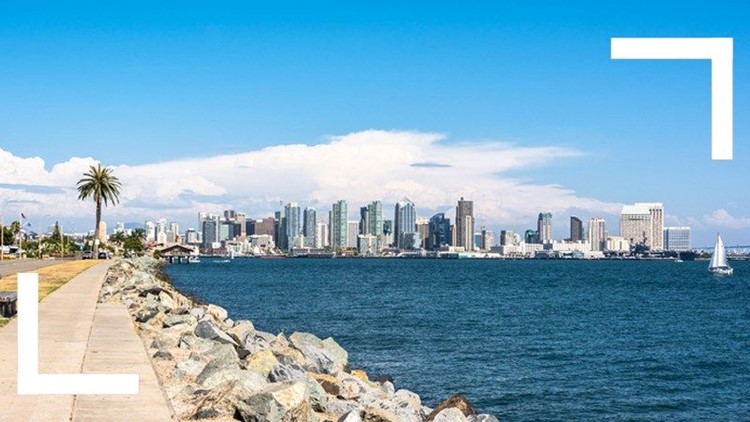SAN DIEGO COUNTY, Calif. — The city of San Diego has reduced greenhouse gas emissions by 24% over the past decade, surpassing its 2020 goal of 15%, according to a report released Thursday.
Adopted by the San Diego City Council in December 2015, the Climate Action Plan calls for slashing GHGs in half by 2035, compared to emission levels of 2010, and requires annual monitoring of GHG levels. The plan also aims for all electricity used in the city to be from renewable sources by 2035.
This year marks the fourth consecutive year of GHG reductions, according to the CAP annual report, up from 21% a year ago.
"Climate action isn't just a phrase in San Diego, it's a way of life," said Mayor Kevin Faulconer. "The investments we're making now to protect the environment will pay huge dividends going forward. We're making solid progress on leaving behind a cleaner San Diego, but we know there is much more work to do, and it's going to take all of us being part of the solution to get where we need to go."
Other key findings in the annual report show:
-- a 15% reduction in residential energy use;
-- a 14-gallon reduction in daily per capita water use;
-- a 2.5% reduction in municipal energy use;
-- 43% use of renewable electricity citywide;
-- 8,800 linear feet of improved sidewalks;
-- 64 electric vehicle charging stations; and
-- 100 hybrids in the municipal fleet.
"San Diego is demonstrating to the world that we can be a resilient, thriving community in an uncertain climate while improving the quality of life for residents," said Cody Hooven, the city's chief sustainability officer. "We are using solar, installing bike lanes and planting trees all in an effort to reach our climate goals. Together, as a community, we are creating a city of the future."
Sustainability efforts have helped spur the local economy and create jobs, according to the report, which says jobs related to sustainability have grown 17.6% since 2010. The largest increase has come in the clean and renewable energy sector.
The report also includes what San Diego officials say is the first in- depth analysis of climate equity across the city. The Climate Equity Index looks at environmental and socioeconomic factors that need attention when addressing access to opportunities for communities that have been historically underserved.
The index uses 35 indicators to measure equity impacts, including flood risk, poverty, transportation and traffic. The goal is to better identify vulnerable communities and inform decision-making for neighborhood investments, while providing a data-driven approach to measure progress.
"The Climate Equity Index was developed in partnership with organizations throughout the city to better understand and serve our communities that face barriers to opportunity," said climate equity specialist Roberto C. Torres. "It's the first time a city has done an assessment like this to help address climate equity, and San Diego is one of only a handful of cities in the country with staff dedicated to bringing climate equity to our neighborhoods."
San Diego also continues to be a national leader in several categories, including becoming the largest city in the country to pursue a clean energy community choice program, city officials said.
San Diego's 100% renewable goal by 2035 is 10 years earlier than California's goal of 2045, set earlier this year.
Report: San Diego ahead of schedule in meeting clean air goals
Adopted by the San Diego City Council in December 2015, the Climate Action Plan calls for slashing GHGs in half by 2035.



